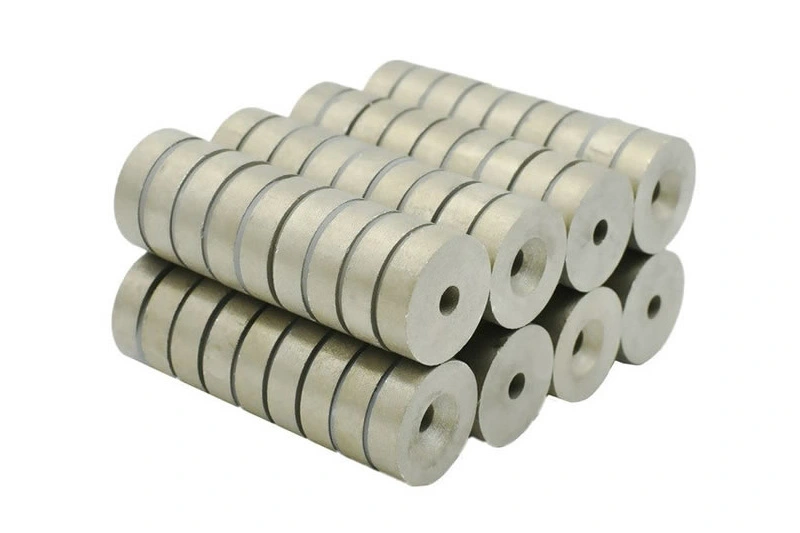Magnets are usually divided into two categories: soft magnets and permanent magnets. Soft magnetic materials include silicon steel sheets and soft magnetic cores, while hard magnets include aluminum-nickel-cobalt alloys, samarium-cobalt, ferrites, and neodymium-iron-boron.
Among them, samarium-cobalt magnets are the most expensive, ferrite magnets are the cheapest, and neodymium-iron-boron magnets have the highest performance, but aluminum-nickel-cobalt magnets have the most stable performance and the best temperature coefficient. Users can choose different hard Meank magnetic products according to their different needs.
Before deciding which type of magnet to choose, we should understand what role the magnet needs to play.
Main functions: move the body, fix objects, or lift objects. The shape of the required magnet: disc-shaped, ring-shaped, square-shaped, tile-shaped, or special-shaped. The required size of the magnet: length, width, height, diameter, tolerance, etc. The required attraction of the magnet, the required price, and quantity, etc.
The performance of a magnet, like samarium cobalt countersunk magnets, is mainly determined by the following three performance parameters:
1. Remanence Br: After a permanent magnet is magnetized to technical saturation and the external magnetic field is removed, the stored Br is called remanence.
2. Coercivity Hc: The reverse magnetic field strength required to reduce the B of the saturated permanent magnet to zero after magnetization to technical saturation is called the coercive force or coercivity.
3. Magnetic energy product BH: Represents the magnetic energy density established by the magnetic material in the air gap space (the space between the two magnetic poles of the magnet), which is the static magnetic energy per unit volume of the air gap.
Since this energy is equal to the product of the Bm and Hm of the magnet, it is called magnetic energy product. Magnetic field: The space where magnetic effects are produced on magnetic poles. Apparent magnetic field: The magnetic induction intensity at a specific position on the surface of a permanent magnet.
The magnetic strength is arranged from largest to smallest: neodymium-iron-boron magnet, samarium-cobalt magnet, aluminum-nickel-cobalt magnet, ferrite magnet.
Ferrite: Low and medium performance, lowest price, good temperature characteristics, corrosion resistance, good performance-price ratio.
Neodymium-Iron-Boron: Highest performance, medium price, good strength, poor resistance to high temperature and corrosion.
Samarium-Cobalt: High performance, highest price, brittle, good temperature characteristics, corrosion resistance.
Aluminum-Nickel-Cobalt: Low and medium performance, medium price, good temperature characteristics, corrosion resistance, poor interference resistance.
Samarium cobalt countersunk magnets, ferrite, and neodymium-iron-boron can be manufactured by sintering and bonding methods. Sintered magnets have higher magnetic properties but poor formability, while bonded magnets have good formability but lower performance. AlNiCo can be manufactured using casting and sintering methods. The cast magnet has higher magnetic properties but poor formability, while the sintered magnet has lower magnetic properties but better formability.
Magnets have two poles, but sometimes magnets with a single pole are needed for certain positions, so iron sheets are used to wrap one side of the magnet to shield the magnetic polarity on the wrapped side. The magnetic polarity is reflected to the other side of the magnet through the iron sheet, thus enhancing the magnetic force on the other side of the magnet. Such magnets are collectively referred to as single-sided magnets or single-sided magnets. There is no real single-sided magnet.
The materials used for single-sided magnets are generally arc-shaped iron sheets and neodymium-iron-boron strong magnets. The shape of neodymium-iron-boron strong smco square magnets used for single-sided magnets is mostly circular.

Related Article
Please fill the form to let us know your need. Our sales will get in touch with you ASAP.
Related Products